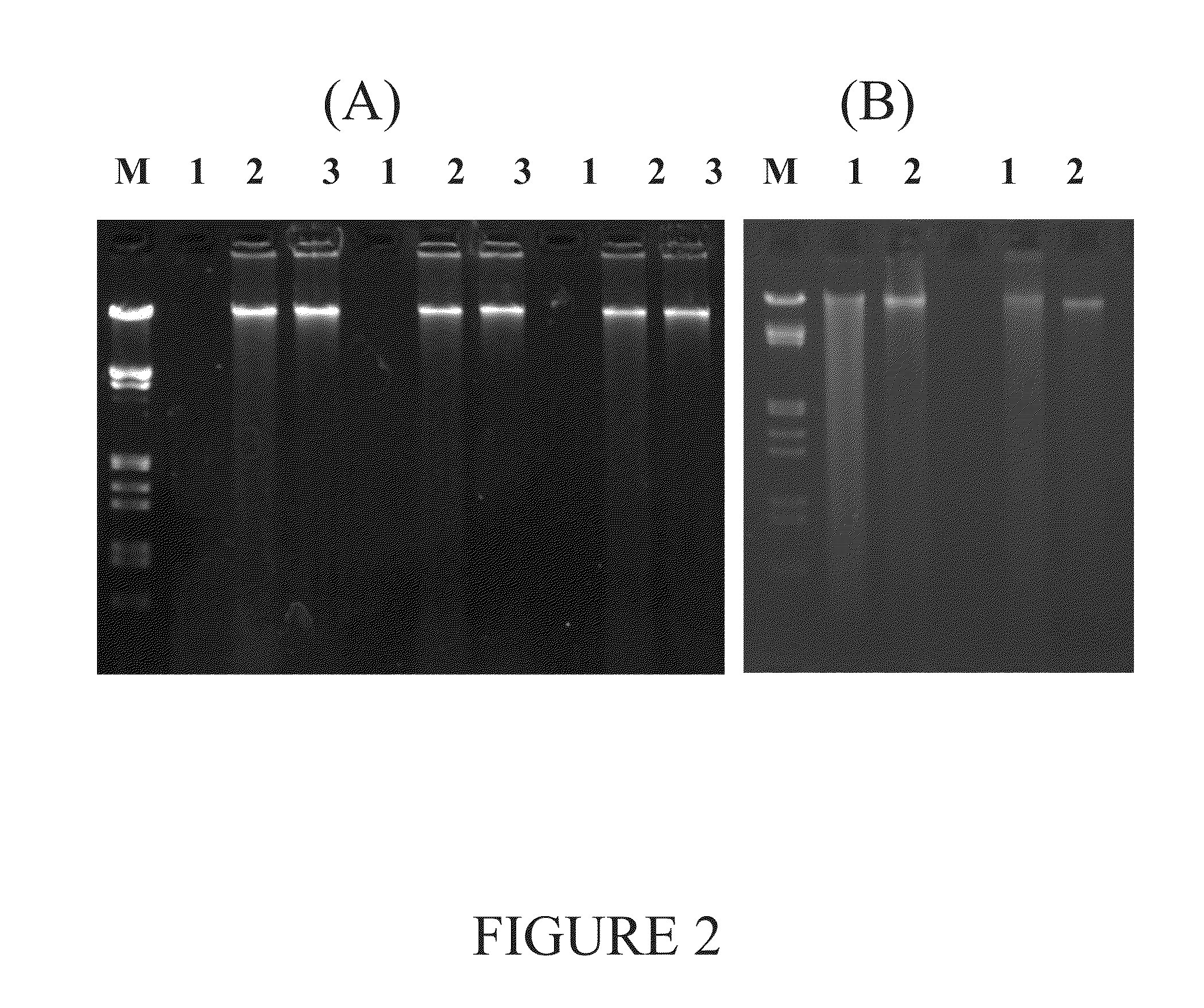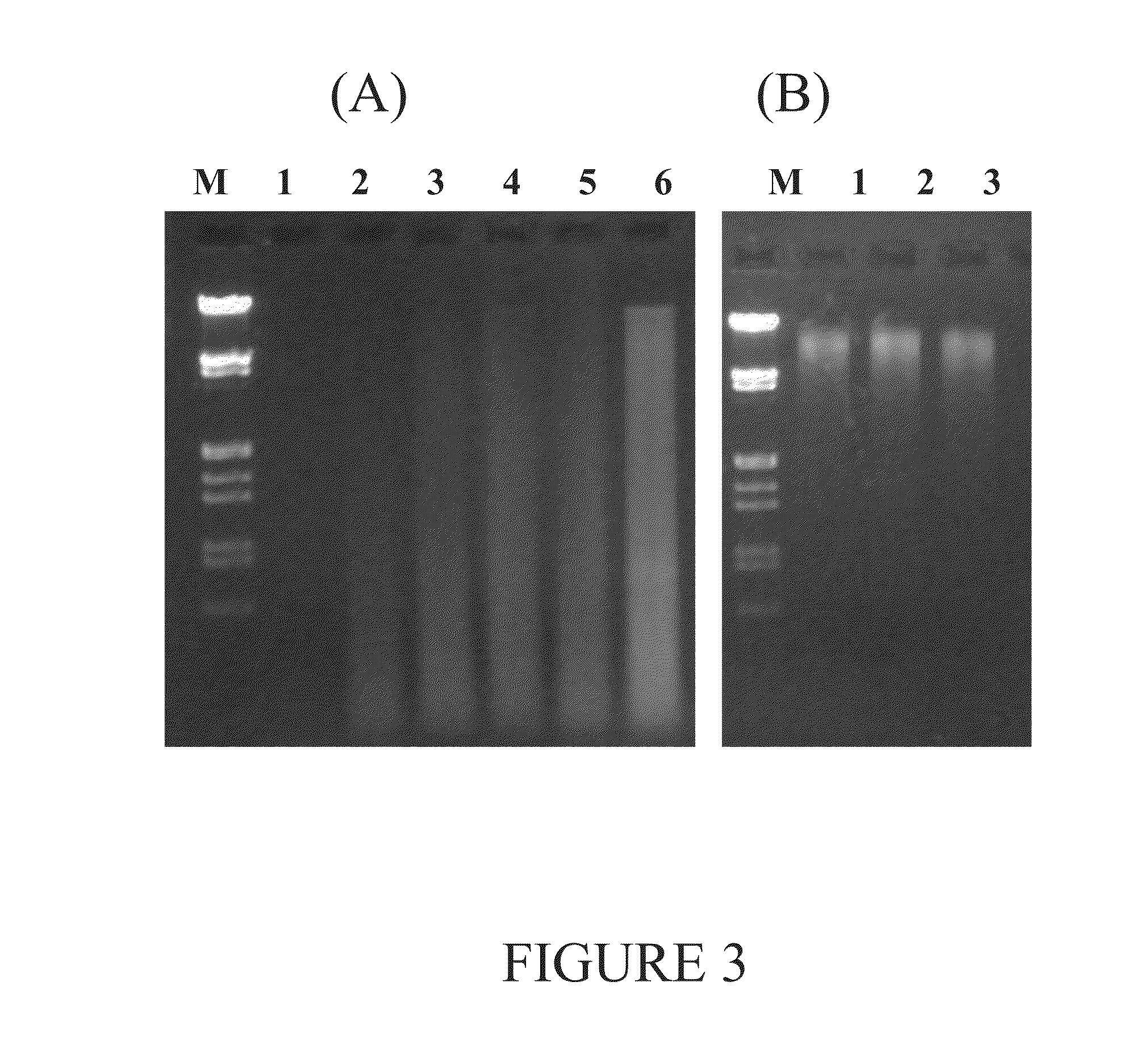Method for isolating nucleic acids
a nucleic acid and isolating technology, applied in the field of isolating nucleic acids, can solve the problems of limiting the nucleic acid based assessment of many environments, difficult to judge the coverage of the microbial community on the basis of nucleic acid yield, and inability to recover nucleic acids of sufficient quantity and quality from iron oxide, etc., to achieve the effect of maximizing the desorption of nucleic acid, facilitating both competitive desorption and high yield
- Summary
- Abstract
- Description
- Claims
- Application Information
AI Technical Summary
Benefits of technology
Problems solved by technology
Method used
Image
Examples
example 1
Methods and Materials
[0081]Collection of Soil and Sediment Samples.
[0082]Three stream sediment core samples were taken from kilometer 5 and 22.3 of East Fork Poplar Creek (EFPC and Hinds Creek, Oak Ridge Tenn., at a depth of 45 cm. The cores were frozen in the field in liquid nitrogen and stored at −80° C. until nucleic acids were isolated from the samples. These cores were heterogeneous in texture and consisted largely of gravel, sand, coal fragments, and iron cemented clay. To prevent loss of precious test sediment, alternative samples containing iron cemented clay were used for method development. A clay sample was taken at 20 cm below the surface of deciduous forest A-horizon in Knoxyille, Tenn. and maintained at 21° C. for >3 days. The top two inches of A-horizon soil was used to evaluate the reagents and ensure that nucleic acids within were protected throughout the extraction process. The iron cemented clay had a uniform appearance and nucleic extractions were performed on 25...
example 2
Extraction Process and Modification
[0096]Known nucleic acid extraction methods were carried out on stream sediment core samples obtained from East Fork Poplar Creek (EFPC). The results of the extractions using known methods failed to produce DNA of sufficient quantity or quality necessary for use in molecular analysis. The EFPC stream sediment samples largely consisted of a mixture of gravel and iron cemented clay as indicated by a rust color after exposure to air. For development of the current method, surface A-horizon soil was obtained from deciduous forest and its subsurface iron cemented clay (clay sample) was used. The clay sample had a uniform texture and a consistent moisture content of 24% at depths >15 cm below the surface. Initial nucleic acid extraction from the clay sample using known methods devoid of sodium phosphate buffer was not productive, and the similarity in color (red) to the refractory EFPC stream sediments suggested a common source of difficulty. The stream ...
example 3
Known Nucleic Acid Extraction Procedures were Compared to the Current Method for Recovering High Molecular Weight DNA from Clay Environments
[0103]Known procedures that used extraction reagent heating with iron cemented clay resulted in excessive DNA fragmentation (FIGS. 4C and 4D). The yield of DNA from known methods varied based on the method for final purification prior to quantification. For example, the OU and MSU methods consist of the same nucleic acid extraction followed by gel purification (OU) or use of PowerSoil™ DNA CleanUp reagents (MoBio) (MSU). Excessive DNA fragmentation in samples heated in the presence of iron cemented clay (65° C.×2 h) resulted in poor yield from agarose gel purification (OU and MSU FIG. 4, FIGS. 4C and 4D) as shown by high molecular weight being retained in the gel comb well. Conversely, the binding and washing purification methods of the current disclosure showed extensive high molecular weight DNA recovery. Despite shearing, lysis by liquid nitr...
PUM
| Property | Measurement | Unit |
|---|---|---|
| temperatures | aaaaa | aaaaa |
| temperature | aaaaa | aaaaa |
| pH | aaaaa | aaaaa |
Abstract
Description
Claims
Application Information
 Login to View More
Login to View More - R&D
- Intellectual Property
- Life Sciences
- Materials
- Tech Scout
- Unparalleled Data Quality
- Higher Quality Content
- 60% Fewer Hallucinations
Browse by: Latest US Patents, China's latest patents, Technical Efficacy Thesaurus, Application Domain, Technology Topic, Popular Technical Reports.
© 2025 PatSnap. All rights reserved.Legal|Privacy policy|Modern Slavery Act Transparency Statement|Sitemap|About US| Contact US: help@patsnap.com



